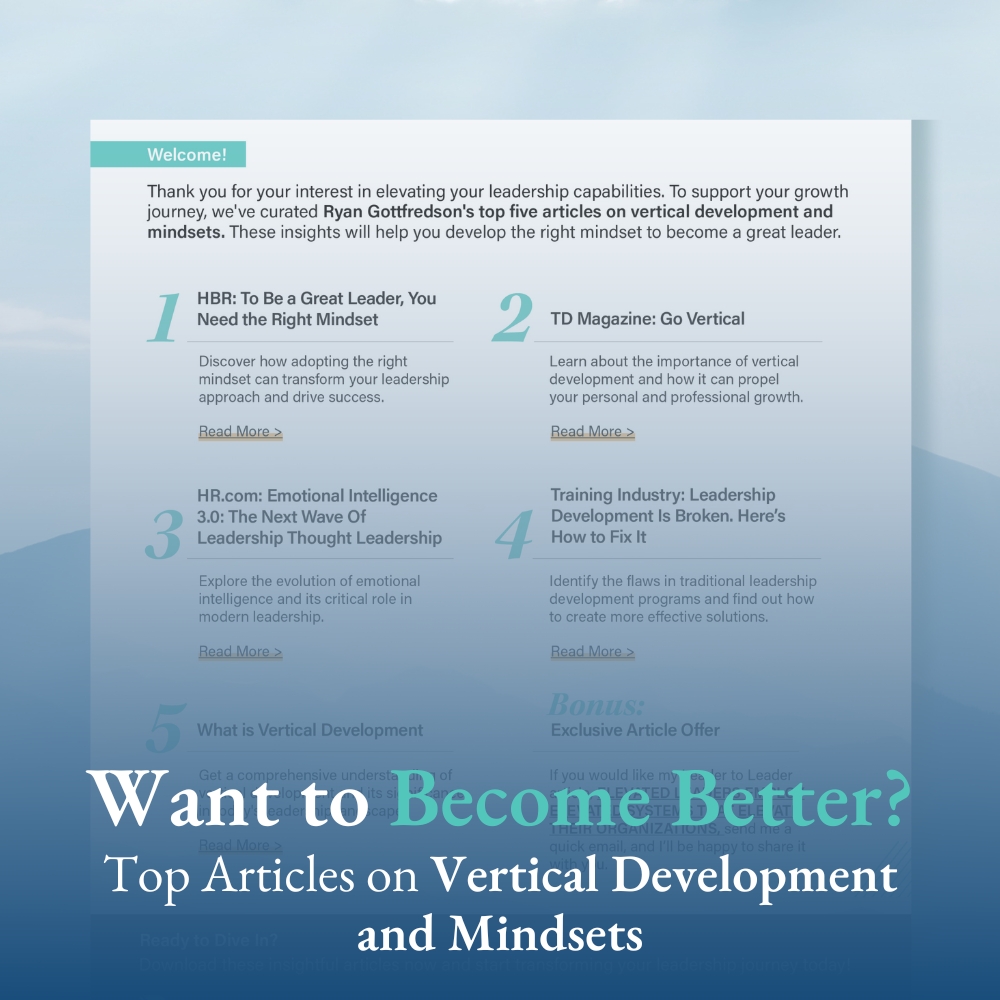My experience is that nearly all people responsible for developing leaders in organizations are only aware of one form of development: horizontal development.
Horizontal development is adding new knowledge, skills, and capabilities to a leader. It is similar to downloading a new app onto an iPad. It is designed to broaden leaders’ functionality, to help them to be able to do more.
Because most leadership developers are only aware of horizontal development, my experience is that 90-95% of all leadership development efforts focus on horizontal development.
But, there is a different form of development that most are not aware of: vertical development.
Vertical development is enhancing one’s ability to make meaning of their world in more cognitively and emotionally sophisticated ways. It is similar to upgrading an iPad’s operating system. It is designed to help leaders process their world and operate more effectively.
In this article, I want to convey the value difference that an organization can receive by adding a focus on vertical development to their leadership development efforts.
Only Horizontal Development
Let’s imagine a situation where an organization wants to help 10 of its leaders to be able to deliver and provide feedback more effectively, so they put together a workshop series on the topic.
The figure below represents their ability to deliver effective feedback prior to the workshop series:

If that is the current reality, this is likely what those developing the workshop series desire after the workshop series:

The assumption associated with this desire is that delivering effective feedback is effectively a program (i.e., skill) that everyone can develop. If we can just get them to come to the workshop series, we will be able to download the “deliver effective feedback” app onto their iPad, broadening their functionality.
What We Are Overlooking When We Don’t Consider Vertical Development
When we understand what vertical development is, we see our leaders and their potential in a more complex way. Specifically, we are able to observe two things that we were likely incapable of observing without an understanding of vertical development:
- The current levels of cognitive and emotional sophistication of these leaders (i.e., their internal operating systems, which I label Mind 1.0, Mind 2.0, & Mind 3.0; click on the hyperlinks to learn more about each of these internal operating systems)
- And by identifying the sophistication of their internal operating system, we have a sense of just how capable they are of downloading a “deliver effective feedback” app and then actually employing effectively in their operation. This is depicted by the dark grey lines above each of the leader bars and represents their potential for growth in delivering effective feedback as a result of a horizontal development workshop series.

What this image demonstrates is:
- Two leaders in Mind 1.0, which makes them relatively incapable of delivering feedback any more effectively after the workshop series
- Six leaders in Mind 2.0, which will only slightly improve their ability to deliver feedback more effectively.
- Two leaders in Mind 3.0. With this internal operating system, they have the cognitive and emotional sophistication to download AND operate the “deliver effective feedback” app provided through the workshop series.
Seeing this, it is clear to see that the results of the workshop series will be far less than what is intended and desired.
What We Gain by Employing Vertical Development
What if, instead of putting the leaders through a workshop series on feedback, we put these leaders through a vertical development program. What difference might that have on their ability to deliver feedback more effectively?
While the program wouldn’t be directly focused on delivering feedback, the result is that because most of them will elevate their ability to make meaning in cognitively and emotionally sophisticated ways, they will be able to navigate feedback situations more effectively. Additionally, their ability to download the “deliver effective feedback” app in a future workshop series is enhanced because they have a more sophisticated internal operating system. This is depicted below:

What we would anticipate seeing as a result of a vertical development program is:
- Greater cognitive and emotional sophistication (represented by a higher percentage of leaders operating in Mind 3.0)
- Enhanced ability to deliver effective feedback, as a result of their internal operating system upgrade
- For most leaders, an elevated potential for delivering effective feedback as a result of a horizontal development workshop series on delivering effective feedback
Sharpening the Axe/Saw
Abraham Lincoln is credited for saying, “Give me six hours to chop down a tree and I will spend the first four sharpening the axe.”
Stephen R. Covey calls this principle “sharpening the saw.” It is effectively what we do when we put our leaders through a vertical development program. By elevating leaders’ cognitive and emotional sophistication (upgrading their internal operating system), we not only help them develop in the process, but we enhance their ability to continue developing moving forward.
So, when it comes to developing your leaders, a question to consider is: are you more focused on chopping the tree or sharpening the axe?
If you want to explore doing some vertical development with your leaders, let’s have a chat. Grab some time on my calendar here: Connect with Ryan.
Also, let me invite you to take my new Vertical Development Assessment to get a sense of what vertical altitude you operate from: Vertical Development Assessment.










